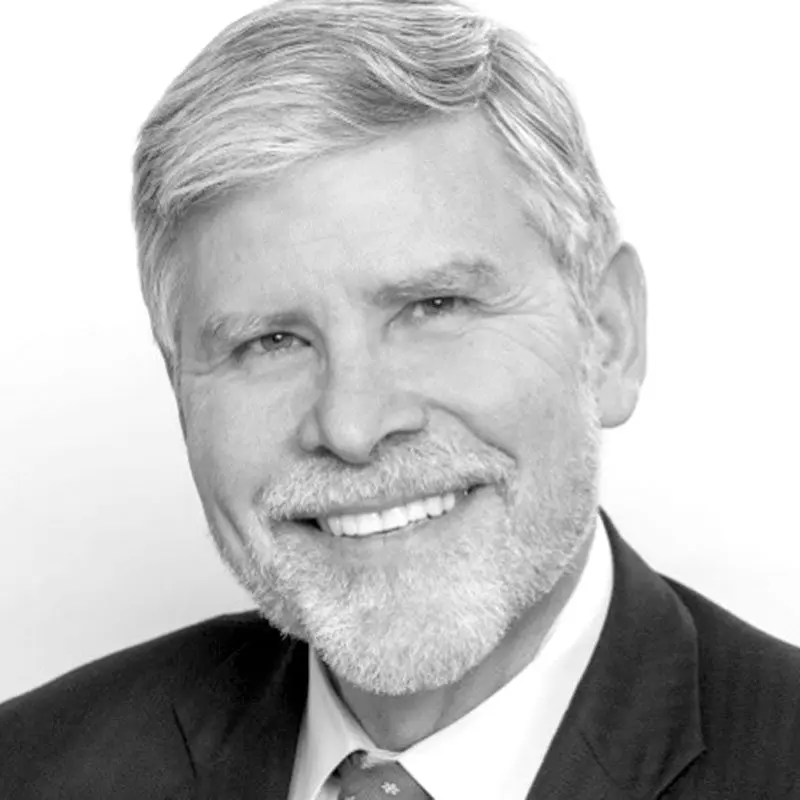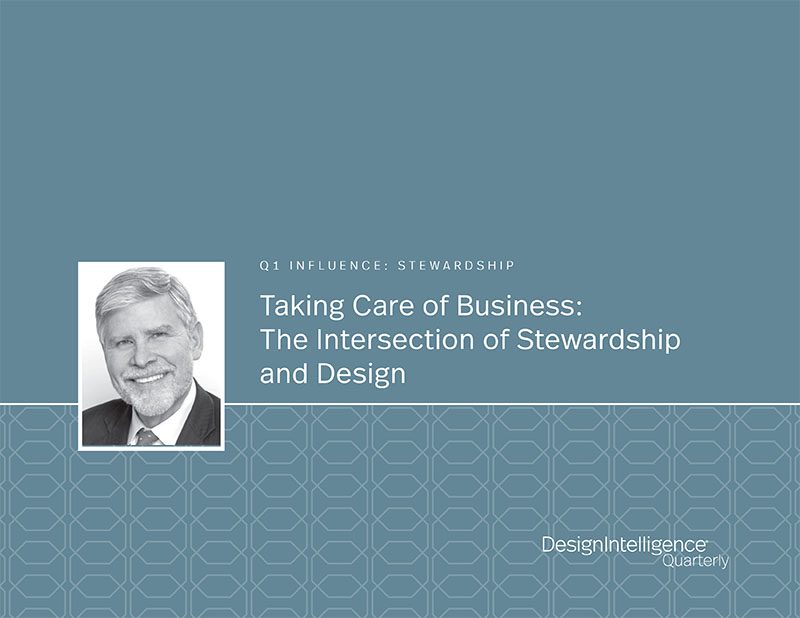Taking Care of Business: The Intersection of Stewardship and Design
by Scott Simpson
Senior Fellow, Design Futures Council
January 26, 2022
Stewardship can be viewed as the careful and responsible management of something entrusted to one’s care.
There is no better illustration of this principle than the Parable of the Talents. We all know the story: Before setting out on a long journey, a rich man entrusted different sums of money to three of his servants. When he returned, he was pleased to discover that two of them had invested their shares, doubling the value, but the third servant, fearful of his master’s wrath, had hidden his allotment away, losing nothing but failing to produce any return. For this, he was roundly chastised. The message is clear: It is not enough simply to protect an asset; rather, it must be put to productive use and made to flourish.
This is a useful reminder for those engaged in the built environment industry. In the aggregate, design, engineering and construction account for trillions of dollars in gross domestic product each year. (Only government services and health care spend more.) The industry is both a huge consumer of natural resources and also profoundly dysfunctional. A third of all projects fail to meet budget or schedule goals and a third of construction materials are wasted. Even worse, the built environment is responsible for nearly half of all carbon emissions. Thus, while there are plenty of assets in play, there does not appear to be much stewardship going on.

Seeing design through the lens of stewardship is a relatively recent phenomenon. It could be said that the sustainable design movement had its origin in the first Earth Day, held in 1970. Things got off to a slow start, but around the turn of the century, certification systems such as LEED in the U.S. and BREEAM in the U.K. became fashionable. In a relatively short time, sustainable design became de rigueur, and now certain aspects of sustainability have been baked into many building codes. One key reason is that clients made the connection between the aspiration of sustainability (“protecting the planet”) and making money. Developers discovered they could charge more rent per square foot for a LEED-certified building, thus producing value in excess of cost: “Doing well by doing good.” Stewardship does not have to be purely altruistic to be effective; no vow of poverty is required.
Good stewardship can be found in some unexpected places. For example, Elvis Presley was one of the most iconic and successful recording artists of all time. To put his career in perspective, the Rolling Stones have sold over 240 million albums and the Beatles have sold over 600 million, but Elvis has sold more than one billion. Despite his premature death at the age of 42, he continues to be the fifth highest earning entertainment celebrity on the planet, raking in over $39 million in 2019.
Elvis’ ability to combine both artistic and financial success was summed up in his iconic motto: “TCB,” or “Taking Care of Business.” It was so central to his world view that it became the name of his backup band. To Elvis, “TCB” was shorthand for “stewardship.” He recognized that he had been given extraordinary gifts — and a huge dose of good luck, starting at birth (he was his mother’s sole surviving son; his twin brother was stillborn). As a young teenager, he had no obvious musical talent, but somehow, he found his way to Sun Records in Memphis, paying $4.00 to record a song for his mother’s birthday. The skinny introvert made an impression, and after a lucky break, his career took off. Within a few years, he was an international star.
While Elvis may be best remembered for the glitz of his later years in Hollywood and Las Vegas, he had a strong philanthropic streak. Early in his career, he made a practice of donating at least $100,000 per year to a wide variety of charities. He was a notoriously soft touch, paying off the debts and mortgages of many people in need, and it is said that he gave away over 200 Cadillacs during his lifetime. Elvis understood that giving back was a privilege rather than an obligation. To him, giving back was simply “taking care of business.”
Not everyone is as talented or as rich as Elvis, but it doesn’t take money or fame to be generous — or a good steward. It’s not the size of the gift that matters; true generosity is measured in proportion to the available resources. That is the essence of stewardship: making the most of what you have been given when all the opportunities and constraints are factored in. The best stewards do the most with the least.
In design and construction, architects and engineers are entrusted with huge amounts of client money. To be good stewards, they must learn to use it creatively and responsibly. It does little good to design a fabulous building that the owner simply cannot afford. It is equally unsatisfactory to create a project that may meet a tight budget but provides just the bare minimum in accommodations for its occupants.
Money is not the only dimension of good stewardship. Time is equally important. Schedule overruns can be extremely expensive, especially for projects designed to generate revenue, such as hotels, office buildings and hospitals. Delivery delays can cost clients millions of dollars in lost income. And speaking of time, perhaps the most effective way for design professionals to exercise good stewardship is to think long-term over the entire life cycle of the building.

It’s a well-documented but underappreciated fact that the cost of operations and maintenance over the useful life of a building trumps the initial capital cost by an order of magnitude. The impact of design decisions made before a building is constructed last for decades. Consider something as routine as the choice of a flooring system in a hospital corridor: Should it be carpet, tile or terrazzo? What is the true cost to procure, install and maintain the floor over time? The least expensive first cost option is usually the default choice, but that could very well be the most expensive decision in the long run, when the actual costs of maintenance and eventual replacement are factored in. Designers who are true stewards will understand the difference and present the information to their owners so they can make well-informed decisions given all the factors involved. That’s stewardship in action.
Another obvious intersection between design and stewardship has to do with occupant safety. Building code compliance is a legal obligation, of course, but codes are intended to set minimum standards. These days, issues of building safety, particularly in schools, have become front-page news. Designers who think like good stewards will use their creativity to make sure that both interior and exterior spaces are designed as responsibly as possible to minimize the harm that may be caused by unexpected events.
Good stewardship is also part of materials selection. Where do specified products really come from? What are their actual components, and are those sources environmentally friendly and sustainable? How are the products sourced and manufactured? Is the labor involved compensated fairly, with working conditions that provide adequate precautions for safety and welfare? These are not questions that are usually pondered in design schools, but perhaps they should be, so that the next generation of design leaders will have a broader and deeper understanding of how their work will affect the built environment over the long term.
As climate change continues to dominate the headlines, the issue of how design can be an integral part of our collective response becomes increasingly relevant. Just like the three servants, human beings have been bestowed with resources that are both unexpected and unearned. It is up to us to figure out how to use them wisely and well.
Scott Simpson, FAIA, is a senior fellow of the Design Futures Council and a regular contributor to DesignIntelligence.


